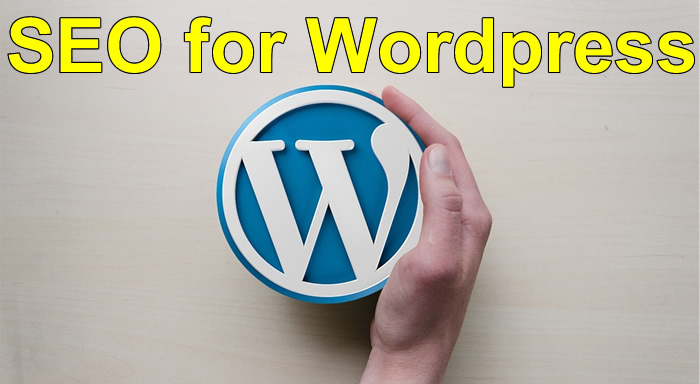
Originally released as a blogging platform, WordPress adoption has grown over the years and its functionality has expanded well beyond its initial specifications. Thanks to countless updates, themes and plugins, WordPress can be used for every type of website imaginable, including eCommerce. The basics are easy to learn thanks to its simplicity and the countless free tutorials out there. Thankfully, this expanded support also includes SEO options and plugins that can handle edits that would otherwise require working knowledge of PHP. We’ll cover a few of the basics here.
This post is meant as a general overview that will wok with most WordPress themes. Some people swear by a specific framework (like the Genesis framework) but this post is meant to work wit whatever theme or framework you install.
Yoast SEO: Joost the Right SEO WordPress Pugin
Yoast is the Swiss Army knife of WordPress SEO. It will simplify your title tag/meta descriptions, generate your XML sitemaps, handle your archive pages, create AMP pages and much more. Much of this post will require the Yoast plugin, though here are alternatives out there.
Writing Posts
Whatever your post is, make sure first paragraph is catchy and includes an enticing image (whether the image is directly embedded in the post or set as a featured image depends on your setup). I generally advocate writing at least 500 words and am a big of long form content. That said, your copy length will depend on your subject and audience.
Insert “Read More” Tag
Inserting a Read More tag will ensure that any archive pages containing the post will only display the post’s content up to that point. Remember, your post will show up on various archive pages (more on that below). To avoid having duplicate content make sure to use this tag. Ideally, add the tag just after the end of the first paragraph (which should encourage the reader to click to see the rest of the article when viewing the snippet on an archive page).
Headings
Post Title
Most themes will use an H1 tag to display your post title (at least on the acual post page). Try and include your main keyword in the post title but don’t go gangbusters on trying to “SEO” your post’s title. For one it looks obvious and ridiculous and you also don’t want to veer into “over optimization” territory.
Try instead of make your post title clever and encourage the reader to click through to the entire post (though I would avoid going into click bait territory, but again this depends on your niche). Remember, your post title and your title tag are not the same. You’ll add your title tag using the Yoast plugin.
H2’s and 3’s
Context may be a dying art, but don’t be part of that crowd. Provide subheadings to organize your content. Not only do search engines reward this but you’ll give your reader content that’s easier on the eyes, and which (s)he can quickly scan in advance. It’s also just good practice.
Use images

We are visual creatures and using images to break up thousands of characters of content will make your content easier to consume.Add images throughout your content to make the process a bit easier. The most exaggerated form of this are the listicles made famous by Buzzfeed. That these have become to popular speaks volumes for their efficacy.
You can also embed videos. The generally rule of thumb is to avoid leaving a wall of text if possible. There should be at least one image or video on the reader’s screen.
Categories
As a general rule I don’t suggest assigning more than one category to a post. I suggest deciding your categories in advance. For example, if your blog/website is on martial arts, then your categories could be: MMA, Muay Thai, Karate, Jiu Jitsu, etc. A post on the McGregor-Diaz fights would go under a category of MMA.
You may be tempted to create categories like “Conor McGregor” and “Nate Diaz” but that’s what tags are for.
Tags
Think of tags as keywords (almost). I don’t suggest going gangbusters and adding 30 tags per post. In fact, I suggest never exceeding 5 unless you really feel it’s warranted. One rule of thumb I use: Will I use this tag again? If the answer is no, I don’t create it. I’ve dealt with sites with thousands of pages of tag archive pages, because the writers treated the tagging system the way 1999 SEO spammers treated the meta keyword tag. This creates a ton of thin/duplicate content pages you’d rather not have using up your crawl budget.
Make sure to stick to a specific nomenclature. Using the above example, “McGregor vs Diaz” is fine. But don’t also create “Diaz v McGregor” nor “Conor McGregor vs Nate Diaz.” Likewise, if your post is about WordPress SEO, you can create tags called any of the following:
- WordPress SEO
- SEO for WordPress
- WordPress SEO tips
But don’t create more than one of the above. If it’s too late and you already have a WordPress site where tags have run amok, there are ways to address this, but which are beyond the scope of this blog entry.
Title tags and Meta descriptions

This is one of those areaa where Yoast really shines. With this plugin installed, your posts (and pages) will now have a Yoast section where you can add your title tag and meta description.
Title Tags
For your title tags, you can get a little more “SEOish” here but still, avoid overdoing it. If your post is on weight loss, think more along the lines of “Idiot’s Guide to Losing Weight & Feeling Better. Even I did it! ” and less “Weight Loss Tips | How to lose weight | Losing Weight.” (Tip: People looking online to “lose weight” aren’t really looking to lose weight, they’re seeking what they believe losing weight will give them: feeling better about themselves). So if you’re brewing up fresh Google rankings, put yourself in the mind of the user!
Meta Descriptions
This is your chance to hook your readers. Keywords in your description won’t help you rank higher but it does help to reinforce that the reader will find what there searching. You also want to use this to section as a mini advertisement. If you’re a local business, place your phone number in here as some searchers may be convinced to call based on your search result.
No keyword stuffing: use synonyms and other thematically-related words
Try to avoid using the same keyword more than once in any Title or H Tag and certainly don’t worry about reaching a specific keyword density. Certainly use your target keyword a few times (there’s no magic formula but I suggest using your target keyword no than once per 200-300 words) for articles 500 words or more.
One sure way to avoiding an over-optimization penalty is to use synonyms and other thematically-related words. So if you article is about car parts, obsessionally include vehicle parts or automotive accessories. Thematically-related words would be words like street, off-road or “gas mileage.”
Image Optimization
As site speed appears to become a bigger ranking factor, WordPress site owners appear insist on becoming more insistent on uploading insanely large images that take forever to load. This is not a good combination. I suggest not uploading images larger than they need to be. If your post or page has a content area that is 800 pixels wide, don’t upload an image for that page or post that’s 4,000 pixels in width (WordPress will resize it appearance-wise, but the file size will remain the same). Resize the image before uploading. Also, make sure to optimize the image both by reducing the file size as well as adding EXIF meta data.
Speaking of image optimization. Note, how there are no images or videos to break up this wall of text. Isn’t this boring?
WP Smush
WP Smush is perhaps the best plugin for reducing the size of your images in bulk. And while I’m a fan of the plugin, I have noticed that it strips EXIF/meta data upon upload so I’ve developed a process around this.
Archive Pages
For better or worse, Yoast creates a ton of archive pages. Most notable are the Category and Tag pages but you also have Author and Date archives. Here is how I generally treat each.
Category: Optimize title/meta description and body description. Treat this like you would a category of an e-commerce site.
Tag: Optimize title/meta description and body description. Treat this like a dictionary or encyclopedic reference.
Author:Optimize title/meta description and body description. This is especially important if you have multiple authors and you want them to stand out.
Date: Noindex/Nofollow, I see little use for this archive these days. It may have relevance if you’re running a new site, which is largely what WordPress is originally based on.
For Categories and Tags, optimizing the body description will usually require some manual php editing in the archive.php file but it is well worth it.
Other Plugins
WP Super Cache

This is another great plugin for reducing the time it takes to download your pages. Depending on how you’ve installed WordPress, you’ll want to only toggle certain caching options. Nevertheless, this is an invaluable plugin for reducing your WordPress site’s pagespeed.
WordPress SEO
These are just a few tips for optimizing your WordPress site/blog for SEO. ‘ll continue to update this post as new plugins and standards arise.




